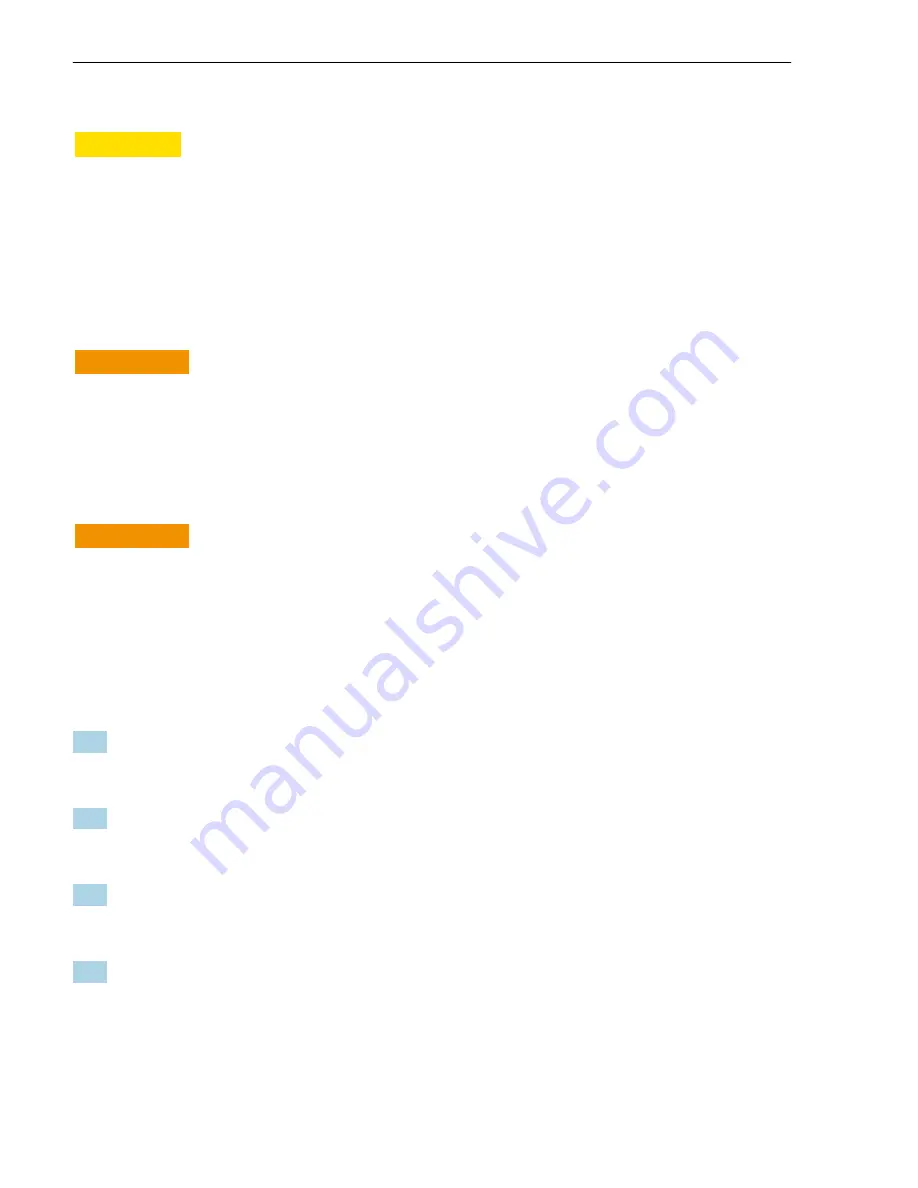
Maintenance
Condumax CLS15/16/21
18
Hauser
7
Maintenance
L
CAUTION
Corrosive chemicals
Danger of chemical burns to the eyes and skin. Danger of damage to clothing and equipment
‣
It is absolutely essential to protect the eyes and hands properly when working with acids,
bases and organic solvents!
‣
Wear protective goggles and safety gloves.
‣
Clean away splashes on clothes and other objects to prevent any damage.
‣
Pay particular attention to the information provided in the safety data sheets for the
chemicals used.
L
WARNING
Hydrofluoric acid and mineral acids
Risk of serious or fatal injury from caustic burns
‣
Wear protective goggles to protect your eyes.
‣
Wear protective gloves and appropriate protective clothing.
‣
Avoid all contact with the eyes, mouth and skin.
‣
If using hydrofluoric acid, only use plastic vessels.
L
WARNING
Thiocarbamide
Harmful if swallowed. Limited evidence of carcinogenicity. Possible risk of harm to the unborn
child. Dangerous for the environment with long-term effects.
‣
Wear protective goggles, protective gloves and appropriate protective clothing.
‣
Avoid all contact with the eyes, mouth and skin.
‣
Avoid releases into the environment.
Clean away fouling on the sensor as follows depending on the type of fouling:
1. Oily and greasy films:
Clean with grease remover, e.g. alcohol, as well as hot water and (alkaline) agents
containing surfactants (e.g. dishwashing detergent).
2. Lime, cyanide and metal hydroxide buildup and low solubility organic buildup:
Dissolve buildup with diluted hydrochloric acid (3 %) and then rinse thoroughly with
plenty of clear water.
3. Sulfidic buildup (from flue gas desulfurization or sewage treatment plants):
Use a mixture of hydrochloric acid (3 %) and thiocarbamide (commercially available)
and then rinse thoroughly with plenty of clear water.
4. Buildup containing proteins (e.g. food industry):
Use a mixture of hydrochloric acid (0.5 %) and pepsin (commercially available) and then
rinse thoroughly with plenty of clear water.











































